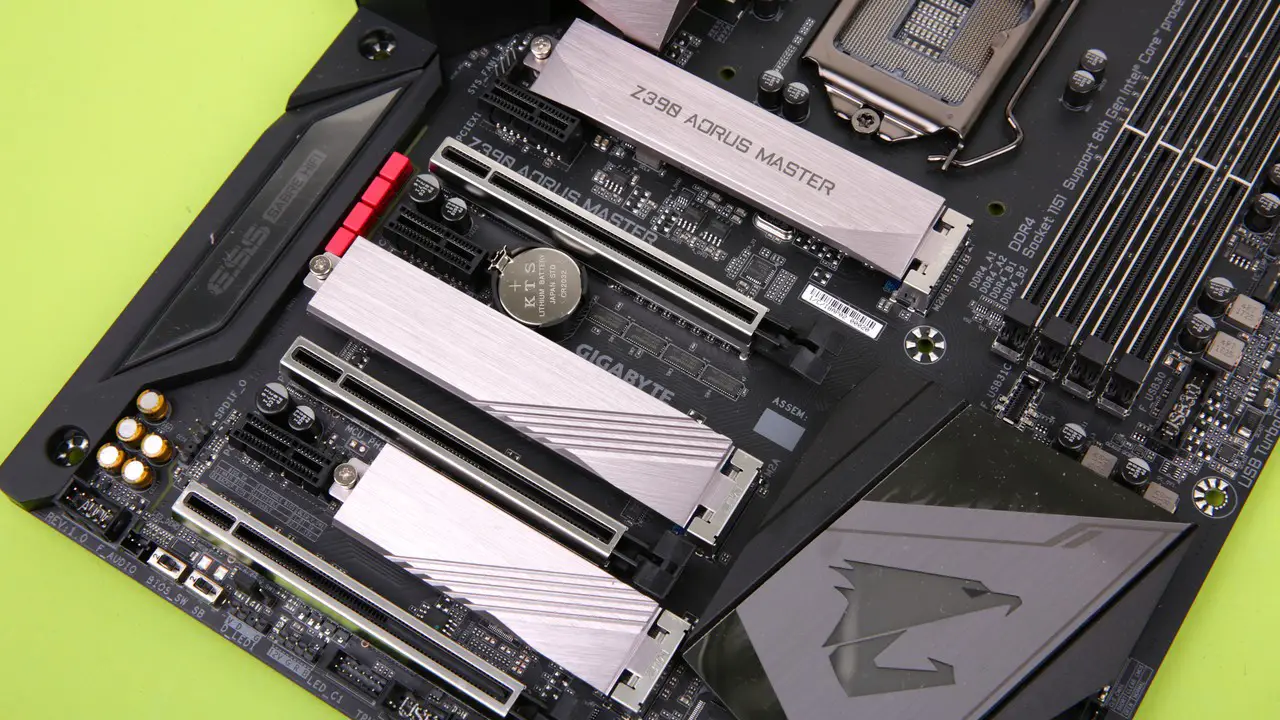Intel Core i9-9900K and i7-9700K bring 8 cores to the LGA 1151 socket for the first time. In parallel, there is a new chipset. The Z390 is not required, however, because the CPUs also run on all other 300 chipsets including the Z370. Differences can only be found in the test with the 8-core CPU in detail.
The first real new Z chipset
One year after the launch of Intel’s Coffee Lake processors, the first truly new flagship chipset is now available. The Z390 chipset succeeds the Z370 on the corresponding new mainboards and appears in parallel to the Core i9-9900K, Core i7-9700K and Core i5-9600K.
The Z370 chipset was launched in autumn 2017 and ultimately only a slightly customized Z270 that was made fit for the new architecture. Because even though Coffee Lake, like Kaby Lake (and Skylake), used the LGA 1151 socket, its wiring had changed during the step to Intel’s first 6-core die. There were no further adjustments with the Z370 chipset, the production in 22 nm also remained.
The Z390 is different, it makes a step compared to the Z370. And yet he just follows suit. Because with Q370, H370, B360 and H310, its novelties have actually been around since April of this year. Because the other 300 chipsets, including the Z370, also support the new 8-core processors of the 9000 series, the Z390 is therefore a product policy and not a technically necessary step.
Z390 compared to Z370, Q370, H370, B360 and H310
The comparison of the Z390 with the Z370 and all other representatives of the “Intel 300 Series Chipsets” reveals differences in the same designation only in detail.
The internal code name for the real 300 chipsets is “Cannon Lake PCH” (alternatively Cannon Point PCH). That’s the Platform controller hub for the entire platform that was originally intended for the Cannon Lake processors. However, reality has caught up with it, even at the beginning of the fourth quarter of 2018, the 10 nm CPUs are not yet available – and will remain so for a year. The previous chipsets, however, ran under “Kaby Lake PCH” (Kaby Point PCH), including the Z370.
14 nm chipsets create additional manufacturing bottlenecks
Technical differences already affect production: All new chipsets are made in 14 nm, the old ones are still made in 22 nm. This makes for a novelty: The fact that the CPU and chipset roll off the production line in the same manufacturing technology has not been seen recently. Because chipsets usually only migrated to the production technology, which will soon expire, while the new one was only available to the CPUs.
But the breakthrough innovation sold by Intel in the spring now poses massive problems, because there were capacity bottlenecks in the 14 nm production, which is why the H310 and the H310C are reissued in 22 nm and the Z370 in 22 nm continues in a second generation of motherboards. Because, it is said from circles of motherboard manufacturers, Intel simply cannot deliver enough Z390.
Core iX-9000 runs on all 300 chipsets
However, this is hardly relevant for the customer: All 300 chipsets also work with the new eight-core processors, including the Z370, with a BIOS update.
If the Z390 of the compulsory cooler is disposed of, it turns out to be a 14 nm miniature like the other real 300 chips. It can be recognized by the small die and the designation SR406 on the package, the S-Spec code from Intel for precisely this chipset, which is then used in marketing Intel FH82Z390 Platform Controller Hub is praised.
USB 3.1 Gen 2 and semi-integrated WLAN as a novelty
Native USB 3.1 Gen2 with up to 10 Gbit / s is the most practical innovation of the new chipsets today. Up to six ports are offered, most Z390 boards offer some directly on the I / O panel, but the rest via internal headers, for example to be able to move them to the front of the housing.
The recently integrated WLAN in parts of the chipset via CNVi was only used tentatively in the mainstream solutions in spring. Because the difference to previously was hardly visible from the outside, after all, an M.2 module is still needed, since only certain functions are taken over by the chipset. In the flagship in the middle class, however, WLAN solutions are found more often, they should partly justify the slightly higher price.
The tabular overview shows that nothing changes except for the two points mentioned. The table was also supplemented by the H310C. At its core, this is a three-year-old H110 chipset with the option of WLAN-ac. When buying a motherboard in the entry-level market, you should always use the B360 chipset.
At the start of Core iX-9000 on the LGA 1511 socket, all mainboard manufacturers have announced corresponding mainboards with a Z390 chipset, new revisions of the Z370 boards will follow. Below, BitcoinMinersHashrate was able to take a first look at models from Asus and Gigabyte.
On the next page: Asus ROG Maximus XI Hero and Gigabyte Z390 Aorus Master















